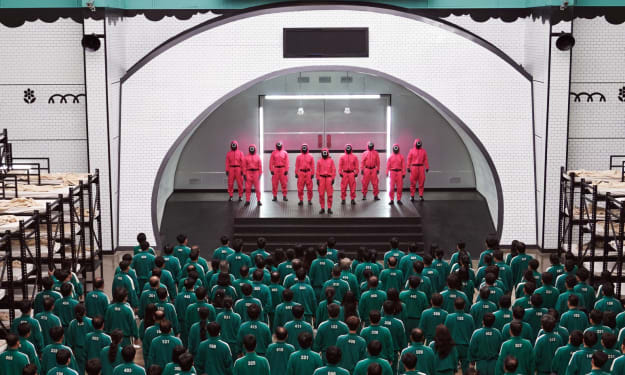Wombats... Glow? So do squirrels and many others...
Under a UV light, it looks like a lot of animals glow.

Authors Note: Thank you for reading! This article is actually in dedication to my Husband, who is bound and determined to forever see my Article; "Why is Wombat poop Square?" as my number one read article. He loves the strangeness in it and he loves how random it is compared to my typical Fantasy/Poem writings. So this article, hopefully, serves as sufficient competition to my previous. If you like this article, go ahead and hit that like and subscribe for more! If you have any questions or concerns, this link will take you to my Facebook Page, where I also take requests to promote your own articles if you are interested! Otherwise, carry on! Make healthy choices and be safe! 🖤
Wombats Glow under UltraViolet Light
First of all! We all know what a Wombat is, right? They are really large, slightly uglier versions of the capybara. They are not to be mistaken with the widely known in the selfy committee for Tourists of Australia, Quokka's-

Yeah, not those. Again, they are still bigger and again not as cute. They have square poops and are members of the "Rabbit Clan" as they eat leaves and more leaves. They are less accommodating of a selfie, and typically travel in mobs. Not to mention, they glow. That's right! They're large dismissive glowsticks. If I had one, I would name it Grumpy.
Anyways, for those of you who live in desert areas, you may be aware that scorpion’s glow under UV (UltraViolet) lights and so do Rattlesnakes. Not as well, but enough to notice. This is common knowledge in those areas so that, honestly, you can find tiny scorpions easier in a carpeted home, like bark-scorpions. “The smaller the scorpo, the deadlier the scorpo,” and if you don't have pets, it does you good to check your carpets and walls as often as you can.
Surprisingly, these are not the only kind of animals that glow under a UV light though. This started with the state of Wisconsin. See, Wisconsin researchers published a research paper about bio fluorescent platypuses. Unsure of its accuracy, Australian Researchers decided to "Fact-Check" these statements and started with the subject of the matter, a Platypus. Paleontologist and curator of mammalogy, Mr. Travouillon borrowed a UV light from an arachnology department and tested this theory. To Mr. Travouillon's surprise, the Platypus did glow under the UV ray. This raised the question; what else does?

American researchers began to find a reason behind why the Platypus glows under UV light and believe it is a form of camouflage. US researcher from Northland College, Dr. Paula Anich (Who originally made the discovery) said; “It is possible that it is actually taking the ultraviolet light that is more prevalent at dusk and dawn, making it kind of disappear so that any predators that are keying in on ultraviolet light can’t see the platypus because it is kind of cloaking itself,” adding, “the benefit is probably so they can see their species from a distance, and they can approach them because they know that it is safe to go towards that animal.”
Meanwhile, Australian researchers, less interested in the "why" and more interested in the “who else?” began exploring how many animals they could find that would also glow under the UV light. The number of animals they found to glow under a UV light turned out to be rather extensive. It all started with a Platypus, but then proceeded to Wombats, Marsupial moles, Opossums, Bats, two species of Springhares, three species of North American flying squirrels, and so on. Even Bilbies, (Australians extremely endangered version of a rabbit.)
As we may already know, bio fluorescence has long been known to occur in some insects and sea creatures, not so much the fuzzy-furry "landimals". When asked, Travouillon revealed that he doubts that platypuses use their glow as a mating signal. He noted that they close their eyes when they are underwater. So, he thinks it’s probably a legacy left over from some ancient ancestor instead, much like the vestigial tailbone on humans.

This anomaly has intrigued scientists all over the world and stolen the hearts of all of our animal lovers. The crazy fact about these animals that glow, is most of them, have absolutely nothing in common. They eat different foods, not all of them are nocturnal, they live in different environments, etc... Many scientists report that there is either no function to this or we have not yet discovered its function.
Take note as well that this has not only been tested on dead animals, but it was also tested on live ones in Zoo's. Many scientists have reached out to Zoo's and asked to see if live animals also glow under UV rays and the response these animals seem to be giving is nothing short of color fashion. As if they have doused themselves in color dust and body paint before heading out to some major party. Reminding many people, of Madagascar 3 when the zoo animals were covered in body paint for the circus.

In conclusion, many of our animal critters have bio fluorescence in their skin and/or fur. Makes for very cute and very curious critters. Scientists have begun to speculate that these colors may be so that they can spot their own kind from far away. Why do you think they glow?
About the Creator
Kaliyah Myers
"Change is imperative. But the kind of change is the most important detail."
In being a writer, I hope to share something relatable and adventurous that you can love too.






Comments
There are no comments for this story
Be the first to respond and start the conversation.